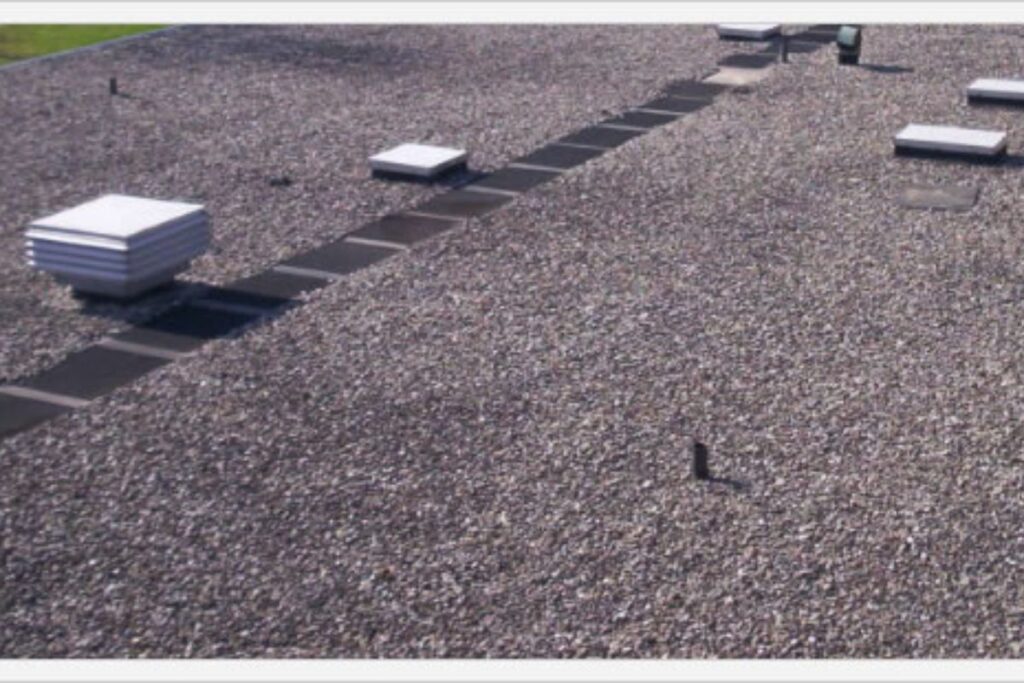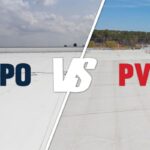If you’re thinking about a new commercial roof or replacing your old one, cost is likely on your mind. Roofing is a major investment. Choosing the right system is key for savings and protection. A tar and gravel roof is a great option for many businesses in 2025. It’s durable, weather-resistant, and affordable, making it a popular choice.
In this article, we’ll cover what you need to know about tar and gravel roof costs. We’ll discuss what affects the price and if it’s a good investment for your property.
Average Cost of a Tar and Gravel Roof in 2025
So, how much does a tar and gravel roof cost in 2025?
On average, you can expect to pay between $5 and $10 per square foot. That means for a standard 2,000-square-foot commercial building, the total cost will range from $10,000 to $20,000.
The price covers materials, labor, and other costs. Although it seems high upfront, tar and gravel roofs can last 20 to 30 years with proper care. This means they provide long-term value.
Cost Breakdown
To understand where your money goes, here’s a breakdown of what makes up the cost:
-
Materials (50–60%) – This includes the tar, gravel, and felt layers.
-
Labor (30–40%) – Installing a tar and gravel roof requires skilled professionals.
-
Other Costs (10%) – This might include removing old roofing, permits, and inspection fees.
5 Factors That Affect the Cost of a Tar and Gravel Roof
Now let’s take a closer look at what affects the overall price. Several key factors can increase or decrease your final roofing bill.
1. Roof Size and Complexity
The size of your building is the most obvious cost driver. A larger roof means more materials and more labor. But complexity also matters.
If your roof has multiple slopes, unusual shapes, or built-in structures like skylights or HVAC systems, expect the price to go up. These features require more detailed work and time, which adds to labor costs.
2. Material Quality
Just like with any product, the quality of the materials you choose affects the final cost. Basic tar and gravel systems are cheaper, but they might not last as long or perform as well.
If you choose higher-grade tar or UV-resistant gravel, your roof may cost more at first. However, you’ll likely save on repairs later. Some customers also pick eco-friendly or energy-efficient materials. These can improve insulation but may increase the overall cost.
3. Accessibility
This is one factor many people overlook. If your roof is easy to access, the crew can work faster and safer, keeping labor costs lower.
On the flip side, if your building is tall or in a tight space, contractors may need special equipment like scaffolding or cranes. That can drive up costs quickly.
4. Location and Labor Rates
Where your building is located plays a big role in the price. In cities or areas with high demand for roofing services, labor costs tend to be higher.
Also, local building codes and permit fees can vary. For example, a roofing job in California may cost more than the same project in Ohio. Always check with your local contractors for a more accurate quote.
5. Additional Features and Upgrades
Many building owners choose to add features to improve performance or extend the life of their roof. These include:
-
Extra waterproofing layers
-
Insulation for energy savings
-
Built-in drainage systems
-
Reflective or UV-resistant coatings
While these upgrades add to your upfront costs, they can help you save on energy and maintenance in the long term.
Read More: What Does a Commercial Roofer Do?
Benefits of Tar and Gravel Roofing
You might be wondering, “Why should I choose a tar and gravel roof over other types?” Here are a few solid reasons.
Durability
Tar and gravel roofs are made to last. They perform well in harsh climates and are resistant to heavy rain, strong winds, and even fire. This system also handles foot traffic well, which is useful if you need to access HVAC units or other equipment on the roof.
With proper care, a tar and gravel roof can last 20–30 years, making it one of the more durable options for commercial properties.
Cost-Effective
Compared to other commercial roofing systems like metal or rubber membranes, tar and gravel is more affordable to install. You get a solid, reliable roof without breaking the bank.
Not only is the upfront cost lower, but the maintenance costs are also quite reasonable. This makes it a smart choice for businesses watching their budget.
Easy to Repair
One of the best parts of this roofing system is how easy it is to fix. Small leaks or damage can be patched quickly and cheaply. There’s no need for expensive tools or equipment, which means fewer headaches and faster solutions.
This ease of repair makes it especially appealing for property managers or business owners who want to avoid lengthy disruptions.
Energy Efficient
Tar and gravel roofs can help regulate the temperature inside your building. The dark tar absorbs heat in winter, while the light-colored gravel reflects sunlight in summer.
This natural insulation means your heating and cooling systems don’t have to work as hard, reducing your energy bills. Some businesses even qualify for tax incentives when installing energy-efficient roofing systems.
Limitations of Tar and Gravel Roofs
While there are many pros, it’s only fair to mention the potential drawbacks too.
-
Not suitable for steep roofs – Tar and gravel roofs work best on flat or low-slope roofs.
-
Messy installation – The hot tar used during installation can produce strong odors and requires safety precautions.
-
Heavy weight – This roofing system is heavier than some alternatives, which might require additional structural support.
These downsides don’t make it a bad choice—they just mean it’s important to work with experienced roofing contractors who can handle the job properly.
Final Thoughts
Roofing is a big decision, and cost plays a key role. It’s not just about picking the cheapest option. It’s about finding a system that gives you the best value for your money.
In 2025, tar and gravel roofs remain a smart, budget-friendly choice for commercial buildings. They provide a mix of affordability, durability, and energy efficiency, especially for flat or low-slope roofs.



